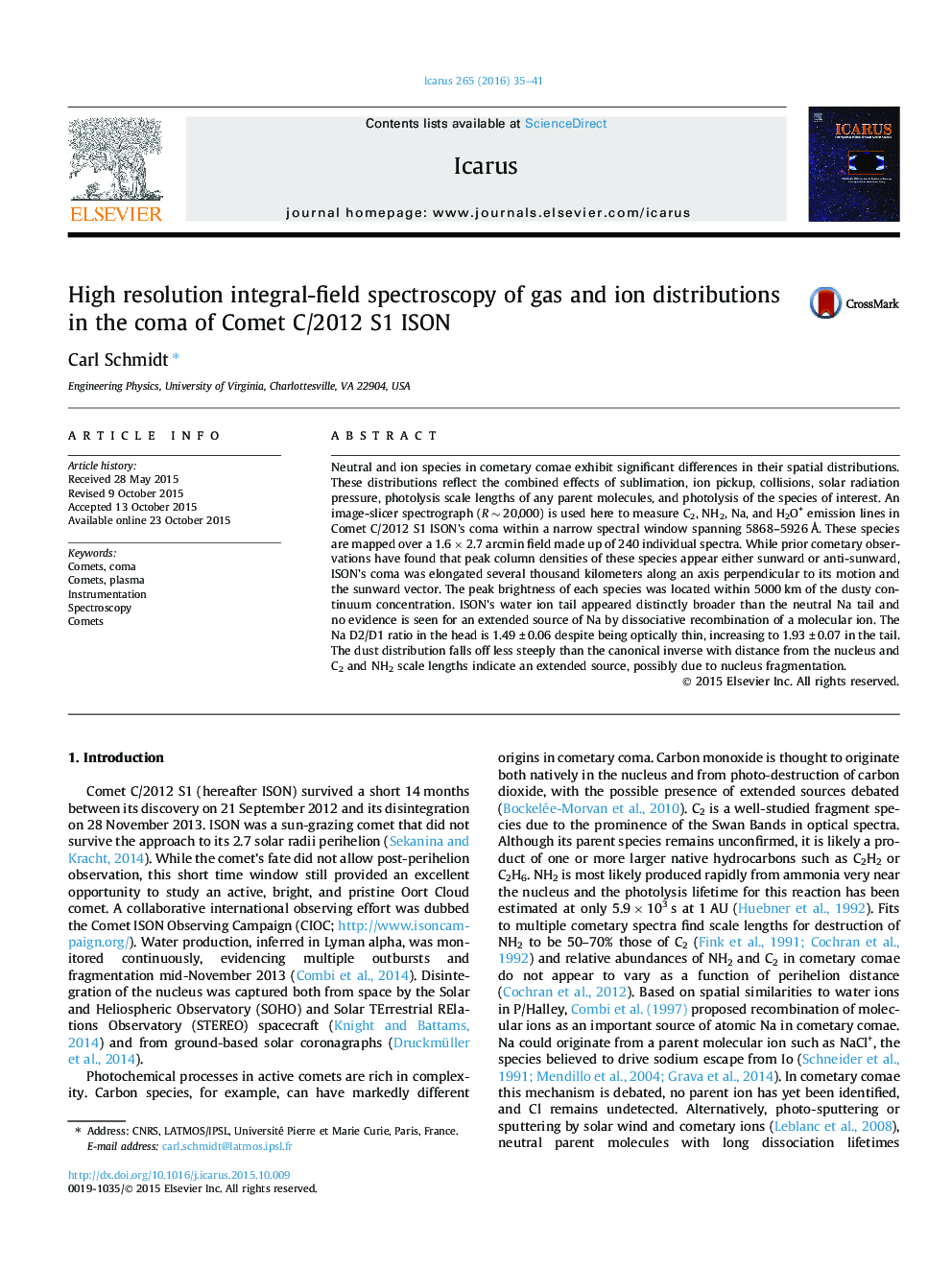| Article ID | Journal | Published Year | Pages | File Type |
|---|---|---|---|---|
| 8135761 | Icarus | 2016 | 7 Pages |
Abstract
Neutral and ion species in cometary comae exhibit significant differences in their spatial distributions. These distributions reflect the combined effects of sublimation, ion pickup, collisions, solar radiation pressure, photolysis scale lengths of any parent molecules, and photolysis of the species of interest. An image-slicer spectrograph (R â¼Â 20,000) is used here to measure C2, NH2, Na, and H2O+ emission lines in Comet C/2012 S1 ISON's coma within a narrow spectral window spanning 5868-5926 Ã
. These species are mapped over a 1.6 Ã 2.7 arcmin field made up of 240 individual spectra. While prior cometary observations have found that peak column densities of these species appear either sunward or anti-sunward, ISON's coma was elongated several thousand kilometers along an axis perpendicular to its motion and the sunward vector. The peak brightness of each species was located within 5000 km of the dusty continuum concentration. ISON's water ion tail appeared distinctly broader than the neutral Na tail and no evidence is seen for an extended source of Na by dissociative recombination of a molecular ion. The Na D2/D1 ratio in the head is 1.49 ± 0.06 despite being optically thin, increasing to 1.93 ± 0.07 in the tail. The dust distribution falls off less steeply than the canonical inverse with distance from the nucleus and C2 and NH2 scale lengths indicate an extended source, possibly due to nucleus fragmentation.
Related Topics
Physical Sciences and Engineering
Earth and Planetary Sciences
Space and Planetary Science
Authors
Carl Schmidt,
